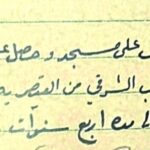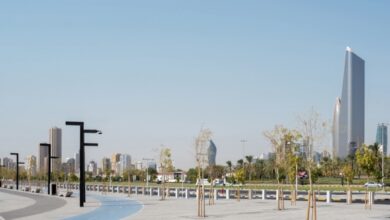Memories of Old Kuwait City with spotlight on the historic Jleeb Al-Shuyoukh neighborhood
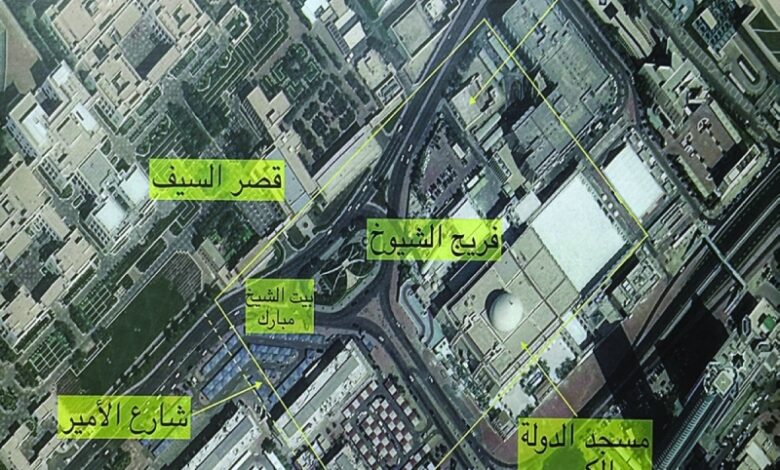
In its ongoing series “Landmarks of Old Kuwait City,” Al-Rai continues to highlight the cultural and historical heritage of Kuwait’s oldest neighborhoods, drawing on rare documents, photographs, and research from the Center for Research and Studies on Kuwait. This edition revisits the Al-Shuyoukh Neighborhood, one of the most prominent districts in old Kuwait City, whose name remains synonymous with the country’s deep-rooted history, architectural character, and national identity.
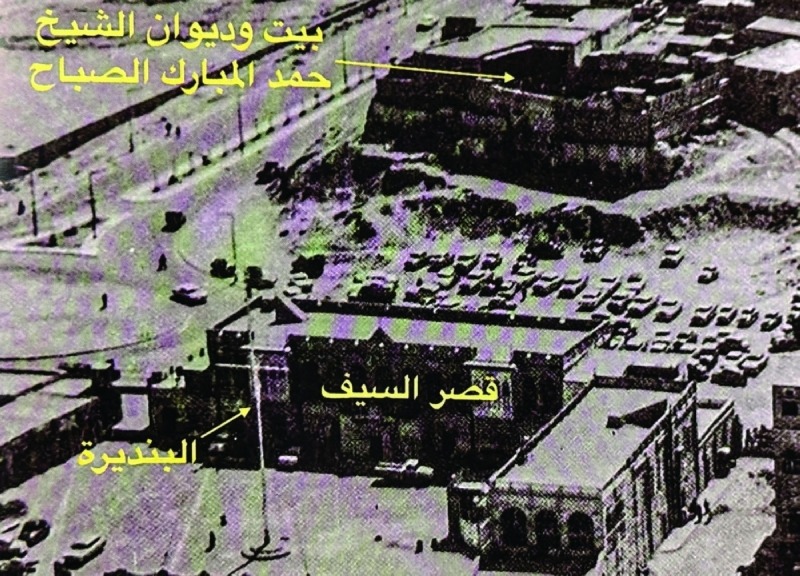
The Al-Shuyoukh District takes its name from its founders and early residents—members of the ruling Al-Sabah family—who settled there over three centuries ago with the arrival of the Utub tribe. The neighborhood was geographically bounded by Seif Street and the seacoast to the north, Buhaitha Hill and Al-Khous District to the west, Ibn Khamis District to the east, and Al-Janaat and Barahat Mubarak to the south, forming one of the city’s most historically significant areas.
Among the neighborhood’s most notable landmarks were Bahita Hill and Amir (Prince) Street. Bahita Hill, a raised area in the center of old Kuwait City, marked the starting point of urban settlement that spread outward in all directions. Historical records, including municipal decisions from 1932 and 1941, mention properties, waqf shops, and the Ibn Bahr (Ibrahim) Mosque surrounding the area—underscoring Bahita’s role as a vibrant commercial and social hub.
Amir Street holds the distinction of being Kuwait’s first formal street, extending from Seif Palace to the old water market. It was home to key landmarks such as the old customs office, the Ibn Bahr Mosque, and the “Al-Dabbag Prison,” located opposite residences of notable sheikhs including Hamad Al-Mubarak, Abdullah Al-Mubarak, and Abdullah Al-Salem.
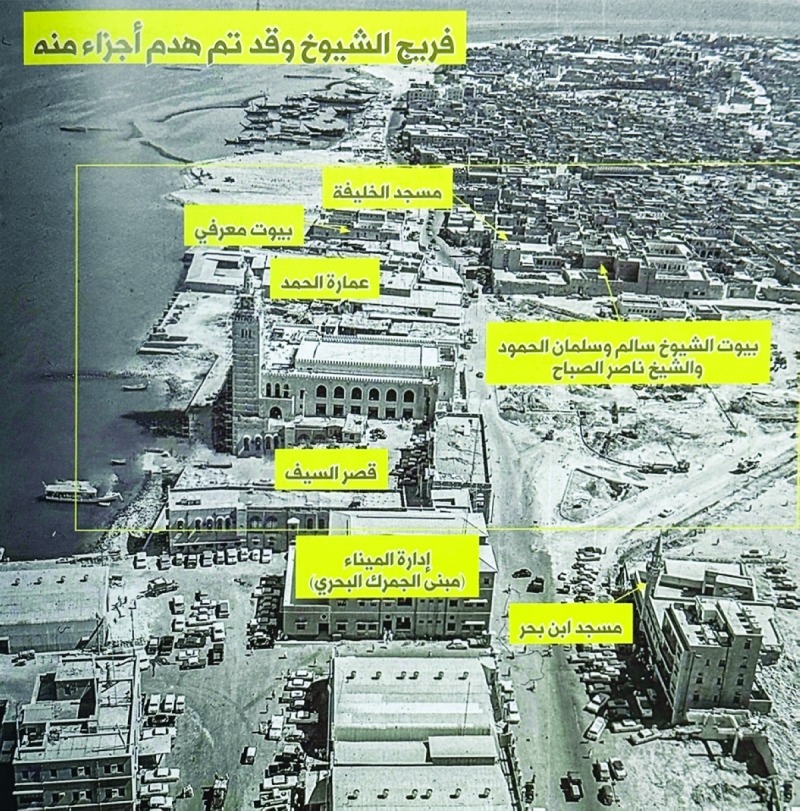
Oral histories record that the Utub tribe’s earliest settlements arose near Bahita Hill and the Taleh area, confirming the site’s foundational place in Kuwait’s urban development.
Engineer Salah Al-Fadhel, speaking to Al-Rai, praised the “Old Kuwait Landmarks” encyclopedia published by the Center for Research and Studies on Kuwait, calling it an invaluable contribution to preserving the nation’s architectural and geographical memory.
He noted that the encyclopedia documents the evolution of Kuwait’s neighborhoods, houses, markets, and public spaces using verified sources such as government records, property registries, and aerial photographs, providing a precise and authentic historical record.
Al-Fadhel emphasized that the work serves a noble purpose: to connect present and future generations to Kuwait’s architectural identity and the figures who shaped it. By documenting ownership records, urban plans, and demolition phases that accompanied modernization, the publication safeguards a vital cultural legacy that defines Kuwait’s evolution from a traditional settlement to a modern city.
The series also explores historical terminology used in municipal and waqf documents, such as the word “mahalla”, which referred to neighborhoods named after families, tribes, or mosques—reflecting Kuwait’s strong sense of community and identity. Al-Rai concluded that this installment only begins to uncover the story of Al-Shuyoukh, with the next episode set to focus on one of its most significant landmarks, the Khalifa Mosque, continuing the journey through Kuwait’s living heritage.













